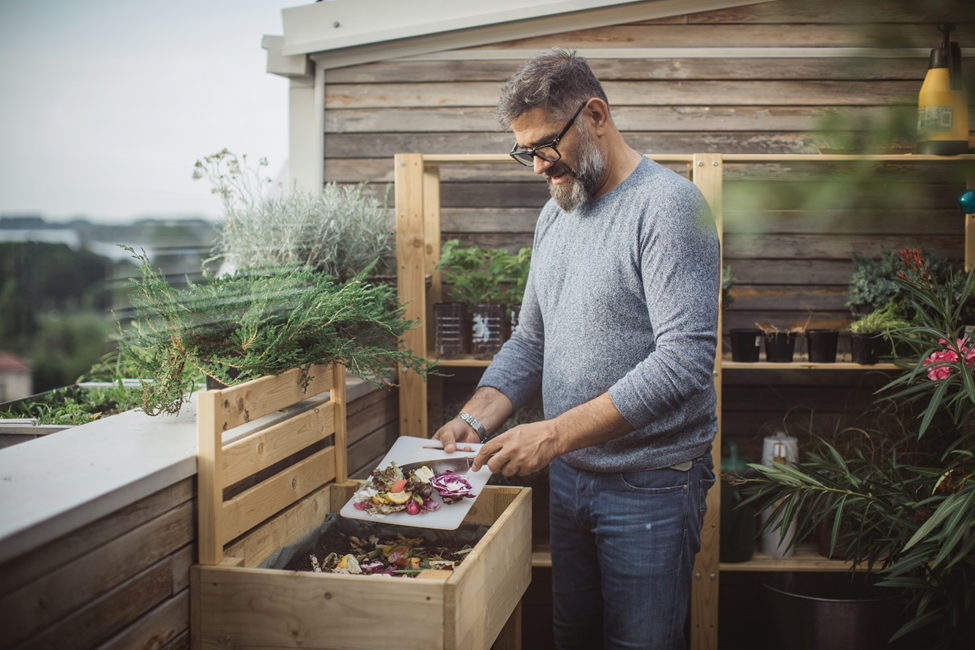
Horticulture
Kill Poison Hemlock Now!
– Christine Gelley, Agriculture and Natural Resources Educator, Noble County OSU Extension

While hemlock may still be vegetative today, it will soon look like this.
Poison hemlock has already emerged in a vegetative state around Noble County and beyond. Soon it will be bolting and blooming on stalks 6-10 feet tall. All parts of the plant are toxic to all classes of livestock if consumed and is prevalent along roadsides, ditches, and crop field borders.
It is a biennial weed that does not flower in the first year of growth but flowers in the second year. The earlier you can address poison hemlock with mowing and/or herbicide application, the better your control methods will be.
Forage Weeds: Fall Forgotten and Spring Startups
Alyssa Essman, OSU Extension State Specialist, Weed Science, Christine Gelley, OSU Extension Educator ANR, Noble County, Kyle Verhoff, OSU Extension Educator ANR, Defiance County
Spring  means rapid forage growth, but it also means rapid weed growth. Due to the variability of spring weather, there are often only a few opportunities to control emerging summer annual weeds, winter annuals missed in the fall, and biennials that are small enough to effectively control. To manage weeds before they become a problem in forages, it is important to scout and plan accordingly. Forage is a broad category, and the spring weed control plan can look very different between species and operations. The problem weeds and whether control is necessary are going to be different between permanent pasture systems and alfalfa fields, and highly dependent on the consequences of specific weeds.
means rapid forage growth, but it also means rapid weed growth. Due to the variability of spring weather, there are often only a few opportunities to control emerging summer annual weeds, winter annuals missed in the fall, and biennials that are small enough to effectively control. To manage weeds before they become a problem in forages, it is important to scout and plan accordingly. Forage is a broad category, and the spring weed control plan can look very different between species and operations. The problem weeds and whether control is necessary are going to be different between permanent pasture systems and alfalfa fields, and highly dependent on the consequences of specific weeds.
In established alfalfa, the decision for weed control of some winter annuals like henbit and field pennycress will depend on the severity of the weed presence, the age of the stand, and the end purpose of the forage. If the weed pressure is high, the stand is young, or the lower forage quality of the weeds interferes with the goal of producing dairy-quality hay, the weed control treatment may be worth the associated cost. In a grazing system, it may be more pertinent to control weeds in the spring to ensure weeds that aren’t grazed don’t go to seed. Numerous weeds can be a problem in forage systems. Reference the 2024 Weed Control Guide for specific recommendations following this general overview.
Continue reading Forage Weeds: Fall Forgotten and Spring Startups
Ohio Victory Garden Program
News Release from The Ohio Department of Agriculture, April 10, 2024
Master Gardener Plant Sale

Turning Over New leaves: Celebrate Food Waste Prevention Week with Composting!
April 2, 2024 by ryankline375
It can be challenging to understand the impact our food waste and diet have on our environment. From preserving our foods to planning out our meals there are many steps we can take to reduce our food waste. In honor of Food Waste Prevention Week, April 1- 7, lets dig in to yet another form of food waste reduction: composting! Though composting has often been viewed as difficult or as an advanced way to stop food waste from entering the landfill, Extension offers some beginner friendly tips!
Continue reading Turning Over New leaves: Celebrate Food Waste Prevention Week with Composting!
2024 Small Farm Conference
The deadline to register for the 2024 Small Farm Conference and Trade Show is approaching on March 28th, we don’t want you to miss out on this great opportunity.
Register today at: https://go.osu.edu/2024osusmallfarmconference
Conference Details: https://u.osu.edu/gofarmohio/programs/new-and-small-farm-conference/

Good Agricultural Practice Training

OSU Extension Bi-Weekly Fruit & Vegetable Report – August 17th, 2023
he OSU Extension Fruit & Vegetable Report is written/published collectively by OSU Extension staff across the state.

Tillage Options for Annual Vegetables
Different kinds of tillage equipment vary widely in their level of soil disturbance. Some tools work the ground to a fine tilth for planting, while others cause minimal disturbance or target only the area where the crop will be planted. Certain vegetable crops succeed better with certain tillage types than others. The following will provide a brief rundown on several common tillage systems and their respective benefits and drawbacks.
Conventional tillage consists of a primary tillage event to turn over the soil and provide a basis for further secondary tillage that is used to further chop and bury vegetation/residues and prepare the seed bed. A moldboard plow is one of the most common types of primary tillage, inverting the topsoil and fully burying surface vegetation. A chisel plow can also be used for primary (as well as secondary) tillage and involves fracturing the subsoil using shanks tipped with chisel points in a way that does not turn over the topsoil. Secondary tillage implements include a disc harrow, which uses steel discs to slice up soil clumps, weeds, and residue. Newer high-speed discs perform better at faster operating speeds compared to traditional types.




Tillage equipment uses a variety of tools to fracture and mix the soil as well as chop and bury residues. Top to bottom – chisel plow, vertical tillage implement, high speed disc, and strip till unit. Photos by Chris Galbraith, OSU Extension.
Continue reading OSU Extension Bi-Weekly Fruit & Vegetable Report – August 17th, 2023
Saving Seeds: How to Start




